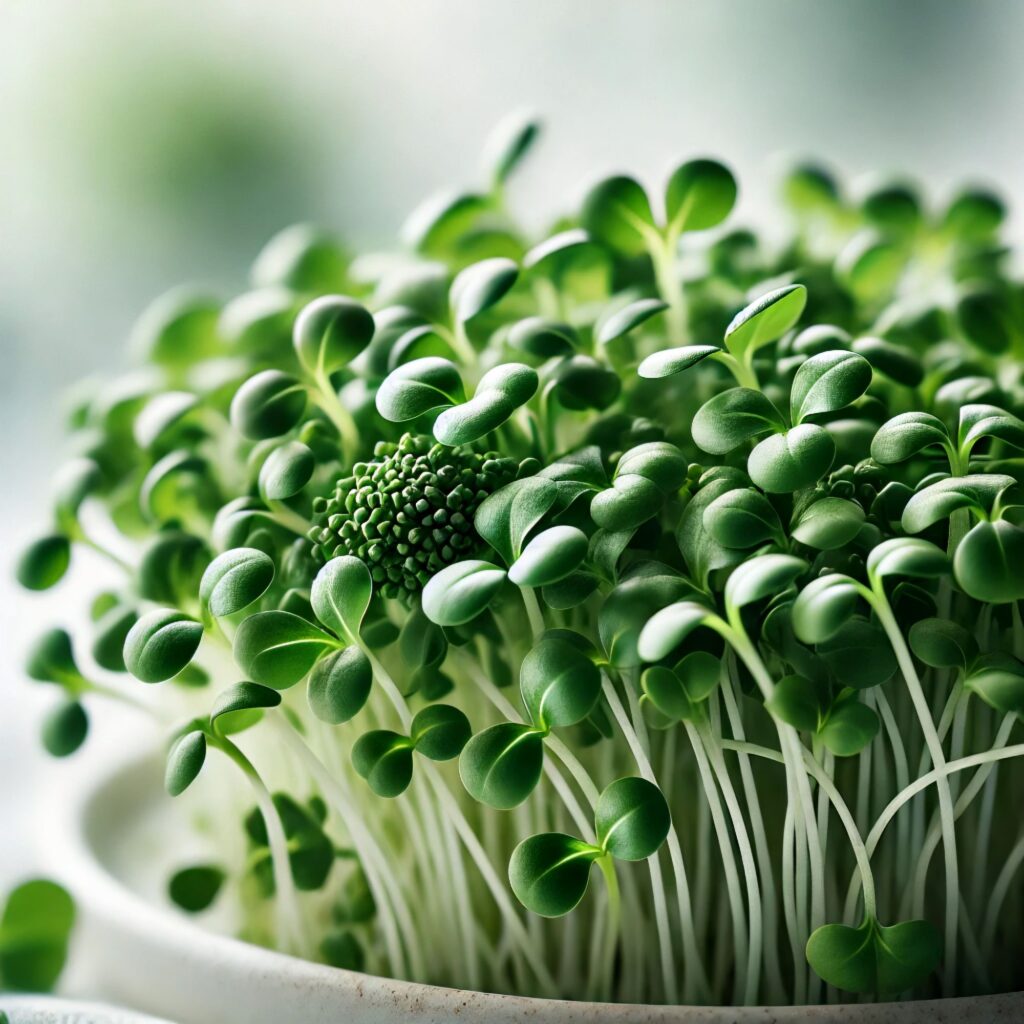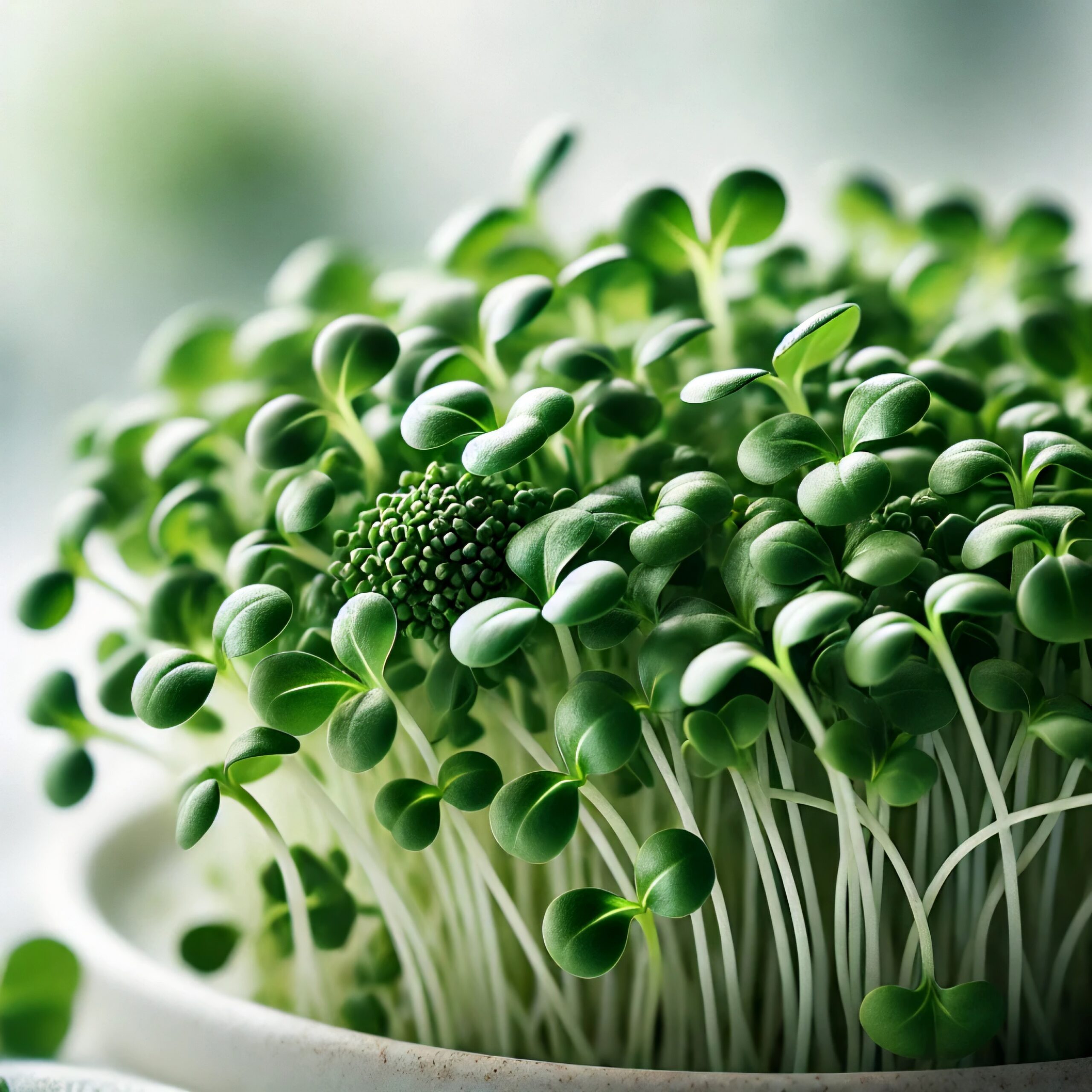Microgreens (mighty miniature plants) are young seedlings of various vegetables and herbs, harvested just after the first true leaves develop. These tiny greens are packed with nutrients, offering a concentrated dose of vitamins, minerals, and antioxidants, making them a powerful addition to a healthy diet.
What Are Microgreens?
Microgreens are the tender, young shoots of plants like broccoli, radish, kale, and basil. Harvested at an early stage, they provide intense flavors and vibrant colors, enhancing both the taste and appearance of dishes.

Why Are Microgreens So Popular?
Nutrient Density: Studies reveal that microgreens can contain significantly higher levels of vitamins and carotenoids—about five times greater—than their mature plant counterparts.
Ease of Cultivation: Growing microgreens at home is simple and requires minimal space, making them accessible for urban dwellers and those with limited gardening experience.
Culinary Versatility: With a variety of flavors ranging from mild to spicy, microgreens can be incorporated into numerous dishes, adding both nutrition and aesthetic appeal.
Health Benefits of Microgreens
1. Enhanced Digestion: Rich in fiber, microgreens support digestive health and promote regularity.
2. Immune Support: The high concentration of vitamins and antioxidants helps strengthen the immune system, aiding in disease prevention.
3. Increased Energy Levels: The abundance of essential nutrients in microgreens can boost energy and vitality.
4. Skin Health: Antioxidants and vitamins present in microgreens contribute to healthy, glowing skin by combating oxidative stress.
How to Grow Microgreens at Home
1. Select Seeds: Choose high-quality, untreated seeds suitable for microgreen cultivation.
2. Prepare the Growing Medium: Use a shallow tray filled with organic soil or a hydroponic growing mat.
3. Sow Seeds and Water: Evenly distribute seeds over the surface and mist with water to maintain moisture.
4. Provide Light: Place the tray in a sunny location or under grow lights to ensure adequate light exposure.
5. Harvest: Within 7–14 days, once the first true leaves appear, use scissors to cut the microgreens just above the soil line.
Incorporating Microgreens into Your Diet
Salads and Sandwiches: Add a handful of microgreens to salads or sandwiches for extra flavor and nutrition.
Smoothies: Blend microgreens into smoothies to boost their nutrient content without altering the taste significantly.
Garnishes: Use microgreens as a fresh garnish on soups, pizzas, and other dishes to enhance visual appeal and add a nutritional punch.
To delve deeper into the nutritional properties and potential health benefits of microgreens, refer to the study published by the MDPI.
For more recipes, visit Wellness Eats and Nutrition. For additional tips on healthy habits and nutrition, visit the Health Journal.
Incorporating microgreens into your meals is an easy and effective way to enhance your diet with minimal effort, providing maximum nutritional benefits.
